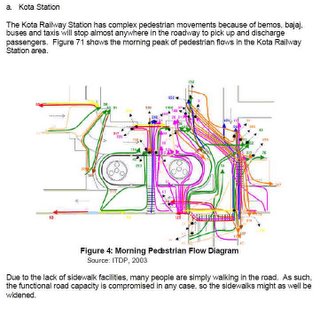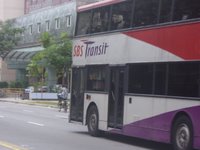The Good?
Two new busway (or BRT) corridors opened last week to join the original TransJakarta Blok M to Kota route. News reports (as shared on sustran-discuss) highlighted how far the busway has come since its shaky start, that is has won over many sceptics and overcome numerous obstacles. The new routes were apparently widely welcomed.
The Bad?
Transport commentators in Jakarta, such as ITDP's Darmaningtiyas, welcomed the new corridors but worried about the remaining problems, especially difficulties with feeder buses who often refuse to honour the common tickets that are supposed to allow a discounted transfer from busway to feeder bus without buying a new ticket. I commented on this on the sustran-discuss list.
... something caught my eye in the coverage of the new BRT corridors in Jakarta (which John Ernst posted on 19 Jan).
"As it is, the integrated ticketing system for both feeder buses and the busway does not work properly. In my experience, after buying the higher-priced tickets, conductors on the feeder buses still demand a fare because they do not recognize the integrated ticket," he said. {that is, Darmaningtiyas, of Intrans and
ITDP Indonesia said}
Can anyone who knows the project explain more about how the integrated ticketing was supposed to work and reasons for it going wrong?
In some ways I find it impressive and ambitious that they even tried to introduce integrated ticketing given that the regulatory framework for buses in Jakarta (from what little I know) seems an unlikely context for integrated ticketing reforms...
John Ernst then responded with further information.
Such problems and issues are common to many developing cities. {warning - outrageous generalisations to follow...} Public transport systems in developing cities is usually of low-quality at low-price, but usually plentiful (even though often overcrowded). The mainly bus and minibus-based systems have minimal formal integration (no free or discounted transfers, little or no information for passengers, little explicit cooperation between operators) and serve primarily low-income captive customers.
How can they do better? Retaining market share as incomes rise will be impossible unless public transport improves. Doing this without breaking the bank on subways (or monorails - see below) will mean the bus and minibus systems have to improve drastically. BRT is a new hope but can only be part of the solution. I suspect that better integration is one of the key strategy that can help. But it is not easy, as the news from Jakarta reminds us, alas.
The Ugly?
Ugly or sexy? Depends on your point of view I guess. But speaking of breaking the bank ...
Another twist in the tussle over who will build the Jakarta Monorail project (and with what technology) was reported in the Straits Times (26 Jan. 2006). The delay in financing has prompted the city government to give the existing consortium, under PT Jakarta Monorail (JM), a deadline of tomorrow to submit their financial closing, following which it would award the contract to another party.
The choice of technology suppliers has also been vexed. Monorail News Briefs reported last year (based on reports in the Jakarta Post) that:
Siemens is the latest in a series of companies that have been in the running to build the system. Malaysia's MTrans, Japan's Hitachi and Korea's Rotem have all been favored for the system at different times, but reportedly costs and other factors have created a manufacturer musical chairs game.
According to the Straits Times (26 Jan. 2006), Korea's Rotem system uses maglev technology and was to have been supplied by a Singapore-led consortium which was sidelined last month after months of dispute with the Indonesian partners over the cost of its system (US$826 million) versus rival Siemens and its Indonesian partners (US$496 million).
The system consists of 2 lines totalling 29 kilometres in length, with a claimed passenger capacity of 270,000 people per day.
My white elephant radar is beeping loudly. But I would really like to see some careful analysis of the relative merits and 'bang for the buck' of recent monorial. This seems urgent because of a recent rash of monorail proposals seeking to add to the short list of Asian systems that includes the venerable Tokyo system and Kuala Lumpur's short city-centre system. India alone is seeing a rush into monorail apparently! I have seen news reports on monorail proposals for Bangalore, Delhi, Kolkata, Goa and Chennai).


